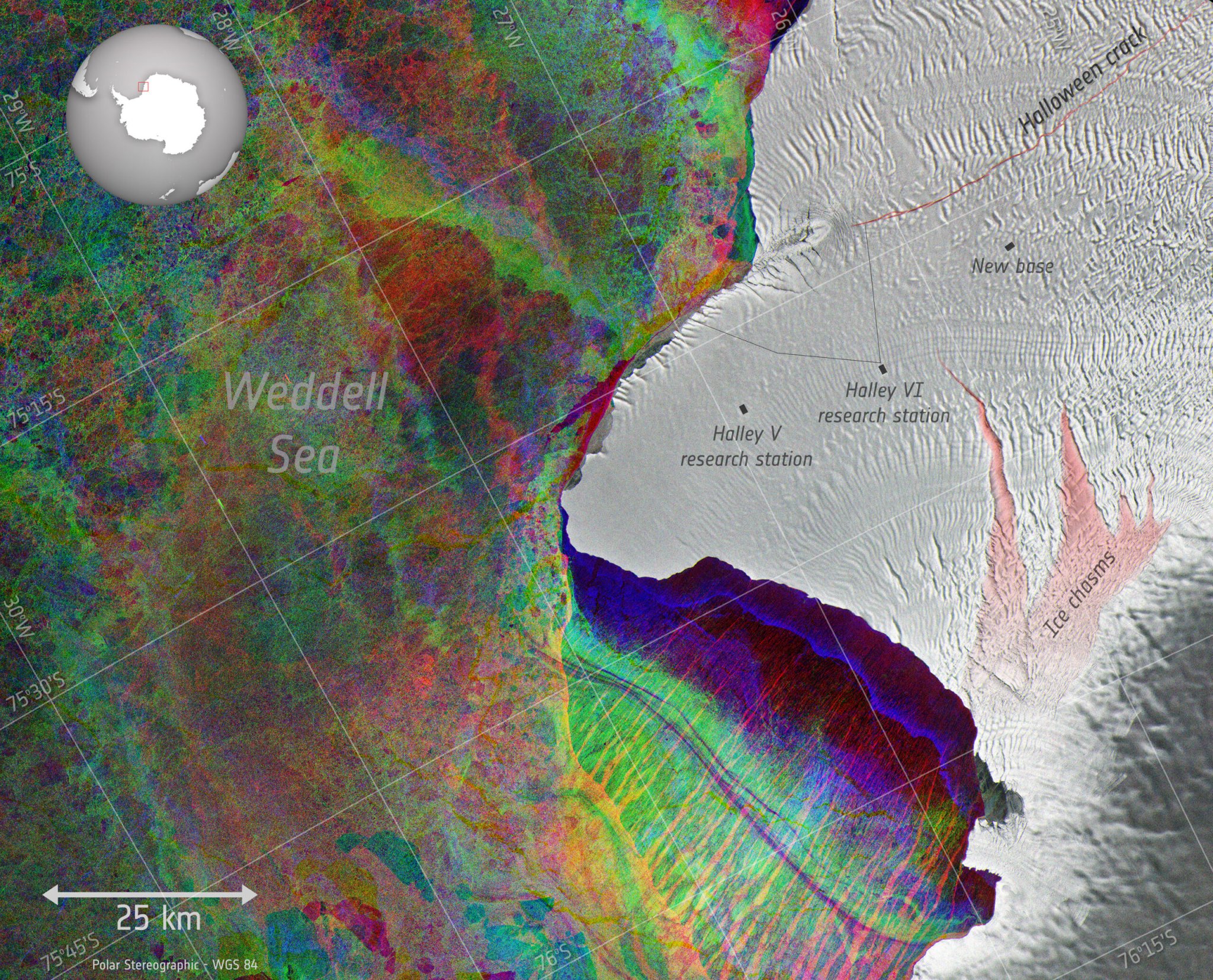

When the buildings you live in—along with your life support systems, creature comforts, and basic livelihood—all reside on a moving chunk of ice, you better hope that ice is solid. And if that ice is slightly less-than-solid, you had better be able to get out of there fast in the event of an emergency.
That’s why the British Antarctic Survey has decided to shut down their Halley VI base during the next Antarctic winter. It’s the second year in a row that the organization made the decision to cease operations during winter months, thanks to two massive cracks in the research station’s home, the Brunt Ice Shelf.
“What we are witnessing is the power and unpredictability of Nature,” says Professor Dame Jane Francis, Director of BAS, in a statement. “The safety of our staff is our priority in these circumstances. Our Antarctic summer research operation will continue as planned, and we are confident of mounting a fast uplift of personnel should fracturing of the ice shelf occur. However, because access to the station by ship or aircraft is extremely difficult during the winter months of 24-hour darkness, extremely low temperatures and the frozen sea, we will once again take the precaution of shutting down the station before the 2018 Antarctic winter (March – November) begins.”
Both of the problematic cracks are naturally occurring. One chasm had been dormant for 35 years, but started growing again—towards the research station—in 2012. Another appeared in October of 2016, too close to the station for comfort.
Last January, the station decided to close down the station in March of 2017 for the winter season. Now, they’ve made the same decision for next year too. It is slated to re-open this week for the summer season of work, but will shut down again next March. Wintering on the continent is simply too risky, as the season blocks some of the few exit routes, and unexpected events like power outages could make a dangerous situation even worse.
Rather than miss out on valuable research time this year, though, researchers plan to install instruments to collect data in their absence. Scientists at Halley have collected weather, solar, and atmospheric data on the ice shelf since 1956. It’s most famous for being the site where the ozone hole was first observed in 1985. Now, researchers will have to rely on automated instruments to collect that information over a span of several months, but they won’t be able to go back and fix any issues that come up over the dark winter
BAS director of science David Vaughan told BBC News that the power system was a prototype. “For it to keep running at -50C with nobody around to chip the ice off it or keep the snow away from it will be a significant challenge. But if it works and the instruments attached to it keep working, then we will collect several of the data streams that would otherwise have been lost, including the ozone measurements.”
But no machine will be able to replicate one unusual aspect of Antarctic research: human observations. During the winter, Halley VI sits in total darkness for months, leaving a small team of scientists in an enclosed space for extended periods of time. Learning how humans behave in that kind of situation is important to organizations like the European Space Agency, which partnered with the BAS to understand more about extended isolation, which is incredibly valuable information when preparing to send astronauts on lengthy missions in outer space.
The 14 humans that would have spent time at Halley next winter will be sent to other, more solid structures in Antarctica or brought home. But this isn’t the first time that nature has messed with plans at Halley.
The current station, Halley VI sits on hydraulic skis, rising high above the ice on stilt-like legs that allow driving snow to pass under the structure. It can and does move periodically to escape the ice at a not-so-blistering pace of under two miles per hour, with labs, housing, and recreation modules all capable of getting dragged to a new, safer location.
Previous iterations of Halley (this is the sixth one, after all) were abandoned or demolished as snow covered them with its crushing weight, or the ice slowly moved them out to sea. The remains of Halley III were last seen encased in an iceberg. Halley V was demolished in 2013 as the more mobile Halley VI came online.
This latest iteration of Halley is designed to be more resilient than its predecessors, but as its owners are discovering, sometimes Antarctica, with its brutal weather and shifting landscapes forces you to improvise. Luckily, a building on skis is more suited than most to slalom through those challenges.
